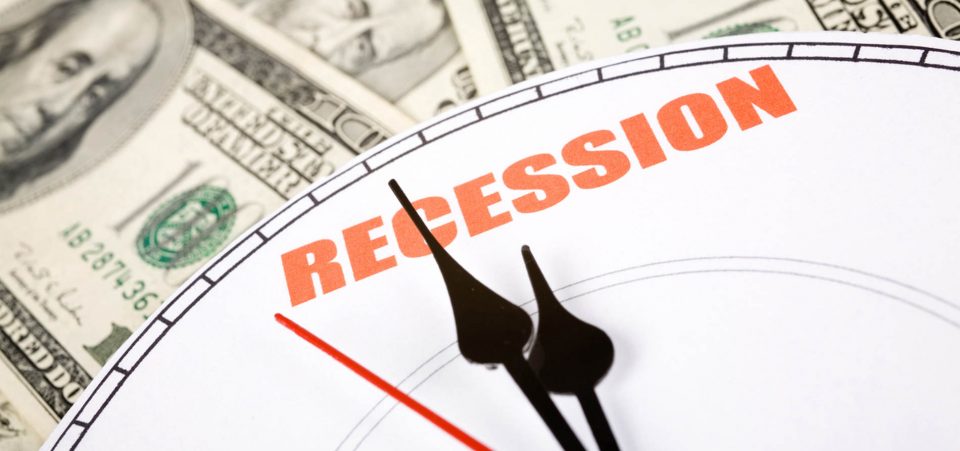Cost of Living Increases as Wages Fall in the U.S.
By all accounts, a U.S. recession looms in 2017. Despite a recovering housing market, stocks at record levels, and soaring consumer confidence, most Americans are not even aware that we are in the midst of an economic recovery. In fact, the barely-noticeable economic recovery is in jeopardy of derailing as wages stagnate, household debt increases, and inflation hits a four-year high.
In January, the U.S. cost of living increased by 0.6% on a seasonally adjusted basis, which is the biggest increase since February 2013. Compared to January 2016, the cost that Americans paid for goods and services (inflation) increased by 2.5%, the biggest gain since March 2012. (Source: “Consumer Price Index Summary,” United States Bureau of Labor Statistics, February 15, 2017.)
The sharp increase was led by gasoline, clothing, new vehicles, and other goods and services. This shows that inflation is kicking in. The cost of gasoline jumped 7.8% and clothing prices went up 1.4%, the most it has gone up since February 2009. New vehicle prices advanced 0.9% in January, which is the biggest increase since November 2009.
While consumer price index (CPI) and retail sales data was, for the most part, strong, wage growth is dead. Monthly hourly wages were down by 0.6% in January. On a year-over-year basis, hourly earnings growth was non-existent, adjusting for inflation. This is a sharp retreat from the 0.8% year-over-year earnings growth in December.
What does this tell us about the state of the U.S. economy? First, employment growth during the U.S. economic recovery has come from low-paying part-time jobs. In January, approximately 50% of jobs came from retail, health care, food services, and temporary positions. Second, Americans are making less money, spending more to not get ahead, and funding their lavish lifestyles with more and more debt.
U.S. Consumer Debt Levels and Delinquencies Soaring
American consumers remain optimistic about the state of the U.S. economy. In December 2016, the Consumer Confidence Index hit 113.7, the highest level since 2001. Analysts had expected the index to hit 109.
American optimism remains near record levels in 2017, but it’s tempered by poor job prospects and earnings. In January, the CPI slipped to 111.8. Economists expected the index to hit 113 in January. (Source: “Consumer Confidence Survey,” The Conference Board, January 31, 2017.)
Growing fears are certainly justified.
U.S. household debt is at its highest levels since peaking in 2008. And many believe it will break this dubious record in 2017. U.S. household debt grew by $460.0 billion year-over-year to $12.58 trillion. In 2008, it peaked at $12.68 trillion. (Source: “Quarterly Report on Household Debt and Credit,” Federal Reserve Bank of New York, February 16, 2017.)
Some have been saying that this rising debt level isn’t as bad as it seems, since the growth is driven by non-housing debt. Instead of non-housing debt increasing, we’re only seeing things like auto loan balances, credit card, and student loan debt growing.
No matter how you look at it, increased personal debt loads are adding stress to the U.S. economy. At the end of 2016, 4.8% of all outstanding debt was in some stage of delinquency. Of the $607.0 billion in delinquent debt, $412.0 billion was in serious delinquency; that is, 90 days or later.
Case in point, economists were pointing to healthy auto sales as a sign that the U.S. economy is healthy. The number of car loans taken out in 2016 was at the highest level in the 18-year history of the data.
All good! Not quite. Cars may be leaving the lots at a steady stream, but repossessions are picking up too.
Auto loan delinquency rates have increased; 3.8% of auto loan balances are now 90 or more days delinquent, which is the highest level since the Great Recession. You can expect that number to climb in the next report. More than one million U.S. consumers are at least two months behind on car loan repayments.
Credit card debt increased by $23.0 billion, to $779.0 billion. The delinquency rate on credit cards also increased by around the same amount, and is at the highest level since 2011. That number will only increase too. Lending to borrowers with weak credit scores has been one of the fastest growing parts of the industry.
Then there is student loan debt. Student loan debt climbed to a record $1.31 trillion in 2016. This is the 18th consecutive year that education debt has hit record levels. Unlike credit cards and car loans, student loan debt can’t be wiped away through bankruptcy.
Will President Trump Oversee a Recession in 2017?
President Donald Trump’s policies are seen as favoring Wall Street and being pro-growth, but will it be enough to stave off a recession in 2017 or 2018? In addition to slowing job growth, stagnant wages, weak economic data, and gross domestic product (GDP) growth, there is the issue of debt.
Both average Americans and Wall Street have enjoyed a world of cheap money. Since 2009, they’ve both taken on huge amounts of debt.
If rates rise too fast, consumers will not be able to pay for their debt, and they will cut back on spending, which will cut into corporate earnings.
Low rates also made it convenient for America to take on substantial debt in a slow-growth economy. Highly leveraged companies would find it difficult to service debt levels, especially if demand (revenue and earnings) falls.
To survive, they’ll cut back on labor and streamline operations to appease investors. Consumers will become nervous about job security and also cut back on spending.
The end result: a recession.






